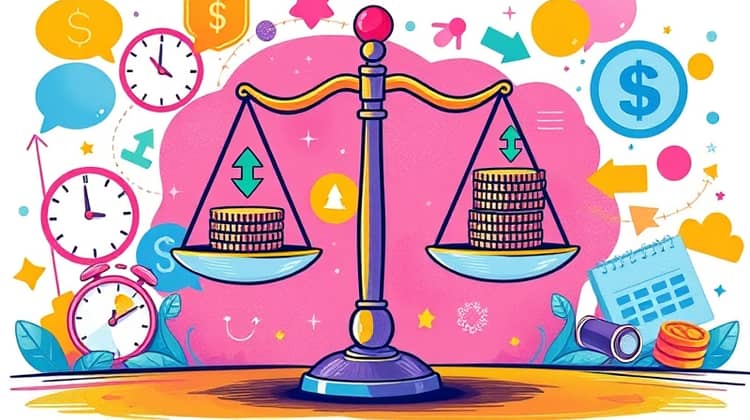Understanding personal loan interest rates is crucial for anyone considering borrowing money, as these rates can significantly affect the total cost of a loan. This article will break down the ins and outs of personal loan interest rates, helping you make informed decisions when seeking a loan.
From what influences these rates to common mistakes to avoid, we will explore the various factors that play into personal loan interest rates, preparing you for a successful borrowing experience.
1. Why Interest Rates Matter

Interest rates are one of the most critical factors to consider when taking out a personal loan. They dictate how much you'll pay in interest over the loan's lifetime and can vary significantly from one lender to another.
A lower interest rate can save you hundreds, if not thousands, of dollars. Understanding the nuances of these rates helps you make better financial decisions, ultimately leading to lower debt costs and improved financial health.
2. Types of Personal Loan Interest Rates

a. Fixed Interest Rates
Fixed interest rates remain constant for the entirety of the loan term, meaning your monthly payments will not change. This provides stability and predictability for borrowers, as you can budget accordingly without worrying about fluctuations in interest rates.
These rates are particularly beneficial in a rising interest rate environment, as locking in a low fixed rate can shield you from potential increases down the road. However, in a declining rate environment, borrowers may miss out on the chance to refinance at a lower rate.
b. Variable Interest Rates
Variable interest rates fluctuate based on market conditions, typically tied to a benchmark rate. This means your payment amounts can change, potentially offering opportunities for lower rates, particularly if the economy experiences a downturn.
While variable rates can initially be lower than fixed rates, they also carry the risk of increasing, which can lead to unexpected higher payments over time. Borrowers need to weigh the potential for savings against the volatility of these rates.
3. Factors Influencing Personal Loan Interest Rates

Several key factors influence the interest rates offered on personal loans. Understanding these can give borrowers an edge in negotiating better terms with lenders.
The following factors are critical:
- Credit score and history
- Loan amount and term
- Debt-to-income ratio
- Lender's assessment and risk criteria
- Current economic conditions
Being aware of these factors can help you take steps to improve your chances of securing a favorable interest rate on your personal loan.
4. How to Find the Best Interest Rate on a Personal Loan

Finding the best interest rate requires some research and preparation. Start by checking your credit report to ensure accuracy and address any issues before applying for a loan.
Additionally, comparing offers from multiple lenders can help you identify the most competitive rates available.
- Research different lenders
- Consider alternative financial institutions
- Check for promotional rates
- Read customer reviews
- Utilize online rate comparisons
5. The Impact of Loan Term on Interest Rates

Loan term refers to the length of time you have to repay the loan, and it can significantly influence interest rates. Generally, longer loan terms come with higher interest rates as they represent a greater risk to lenders.
Shorter terms often have lower rates, promoting quicker payoffs but larger monthly payments. It's essential to balance affordability with total interest costs when deciding on a term.
- Short-term loans generally have lower interest rates.
- Long-term loans often result in higher total interest costs.
- Finding a sweet spot between monthly payment and overall cost is crucial.
Ultimately, the right loan term depends on your financial situation and long-term goals.
6. Interest Rates and Fees: What’s the Difference?

While interest rates are the cost of borrowing money, numerous fees can also impact the total cost of a personal loan. Understanding these distinctions can help you better evaluate loan offers.
Some common fees include origination fees, application fees, and prepayment penalties, which can ultimately affect your loan's overall affordability.
- Origination fees
- Late fees
- Prepayment penalties
- Application fees
7. The Truth in Lending Act (TILA)

The Truth in Lending Act is a federal law designed to promote informed borrowing by requiring lenders to disclose clear terms and costs of lending. This law ensures that consumers receive standard information about interest rates and fees, helping them make better-informed choices.
TILA requires lenders to provide a written disclosure statement that includes the Annual Percentage Rate (APR), terms of repayment, and total costs.
- Disclosures must be clear and concise.
- Borrowers can compare loans more effectively.
- Violations can lead to penalties for lenders.
8. Comparing Personal Loan Interest Rates

When evaluating personal loan offers, it's essential to recognize that interest rates are not the only determining factor. Consider overall terms, conditions, and fees.
An effective comparison will include the total cost of the loan, repayment terms, and customer service reputation of the lender.
- Analyze the APR versus the interest rate.
- Review total repayment costs.
- Check for hidden fees.
- Consider customer service experiences.
9. Why Your Credit Score Matters

Your credit score plays a fundamental role in determining your eligibility for a personal loan and the interest rate you'll be offered. A higher credit score generally reflects responsible borrowing behavior, leading to lower rates and better terms.
On the other hand, a lower score can result in higher interest rates or even disqualification from loan opportunities altogether. Regularly monitoring and improving your credit score can significantly impact your financial options.
10. Common Mistakes When Considering Personal Loan Interest Rates

Many borrowers make critical errors when evaluating personal loan interest rates. Recognizing these mistakes can lead you toward more favorable borrowing experiences. It’s vital to approach lending with caution and clarity.
Some common mistakes include:
- Not shopping around for rates
- Ignoring fees and total loan costs
- Failing to check credit report beforehand
- Accepting the first offer without negotiation
11. Conclusion

Understanding personal loan interest rates is vital for responsible borrowing and effective financial planning. By familiarizing yourself with the different types of rates, the factors that influence them, and the common mistakes to avoid, you'll be better equipped to choose the right loan for your needs.
In conclusion, being proactive in your research and informed in your decision-making can lead to significant savings and a more positive borrowing experience.














